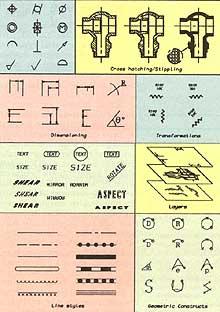STEP: standardized step
1994/09/01 Enparantza, Rafa Iturria: Elhuyar aldizkaria
The other day we presented the problem of information exchange between CAD systems. The information contained in CAD systems manufactured by major software companies is organized differently, in which files created by another system cannot be interpreted. The solution to the problem is to use files or other neutral data deposits, that is, to create standard files that can be understood by any system.
The data models that must be developed to form these neutral files must decide three main questions: the first, what data should be saved, the second, how to save them and, finally, what syntax the previous one should express.
To put a simple example, let's think (since we talk about design information) that to draw mechanical pieces we will use straight lines in geometric objects, among others. Therefore, the line will be an informative entity of our data model. As is known, there are many ways to define the line: two points, a point and a vector, two non-parallel planes... Each CAD system has its own range of entities, with its own names, defined in a particular way and, in addition, with its syntax.
The first step in ensuring the understanding of the different CAD systems was the IGES format (Initial Graphics Exchange Specification). This structure proposed about fifteen years ago is able to organize in a standardized way the geometry of objects built by CAD systems. Therefore, software companies that develop CAD systems began to offer the possibility to write in IGES format the geometric objects that generate their systems, responding to the growing demand for data exchange between CAD systems.
However, product design is not limited to geometric data. In mechanical parts, for example, a large number of technological data must be specified in the design: material specifications, surface finishing, tolerances, all of which have a direct impact on part manufacturing.
A few years ago the STEP (Standard for the Exchange or Product data) standard was created to address the lack of RSI. STEP has already become an ISO (International Standard Organisation) standard. The fundamental step or difference from GIS to STEP is given by the breadth of the framework of each standard. The letter G of the GIS refers to the “Graphs”, when it refers to the “Products” P of the STEP. In fact, IGES aims to transmit technical drawings between CAD systems.
A person could interpret these drawings to create products. STEP offers the possibility to transmit product models between CAD systems. Thus, a computer can interpret these models to manufacture products.
The EXPRESS data modeling language has been developed for the drafting of information entities defined by the STEP standard. EXPRESS (which was not possible in the RGI) is a computer-processed language that has been specifically built to describe interchangeable product information between any engineering area.
The conclusions are evident. STEP, with a common database, will allow the integrated storage of the product information generated by each manufacturing stage. And as is known, the common database on the product is an indispensable condition for the realization of the so-called compatible engineering.
Therefore, the STEP not only aims to ensure the exchange of information between CAD systems, but aims to support any computer-assisted system of any engineering area, whether CAD (design), CAM (manufacturing), CAPP (process planning), CAQ (quality) or any other CAE (engineering).

Gai honi buruzko eduki gehiago
Elhuyarrek garatutako teknologia





